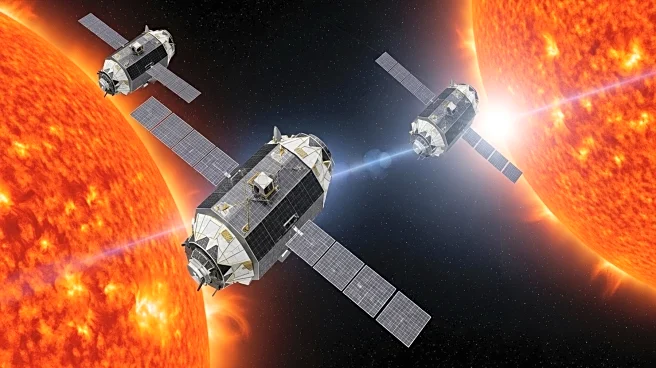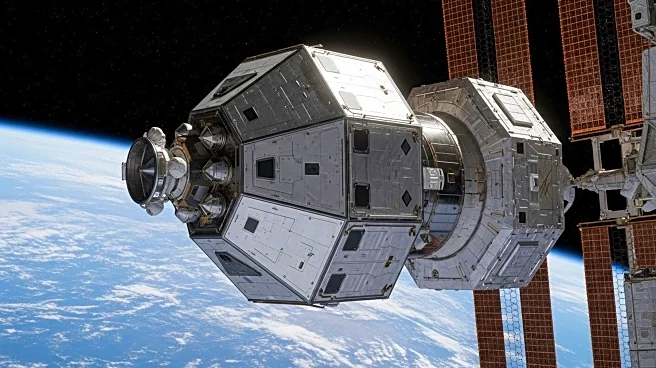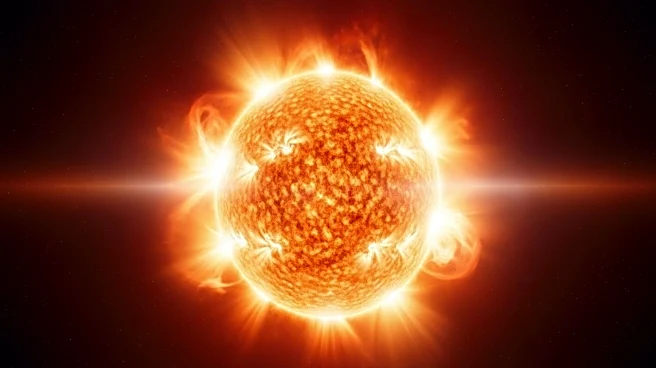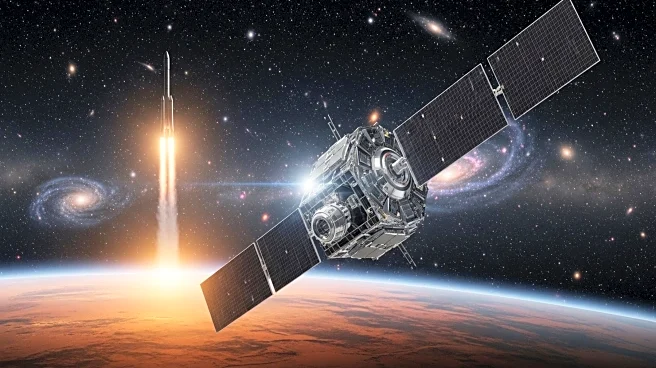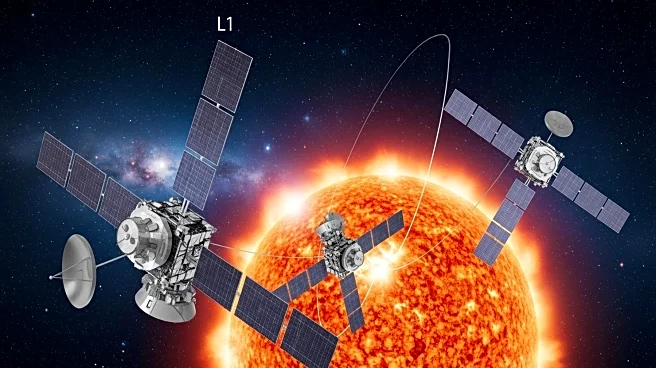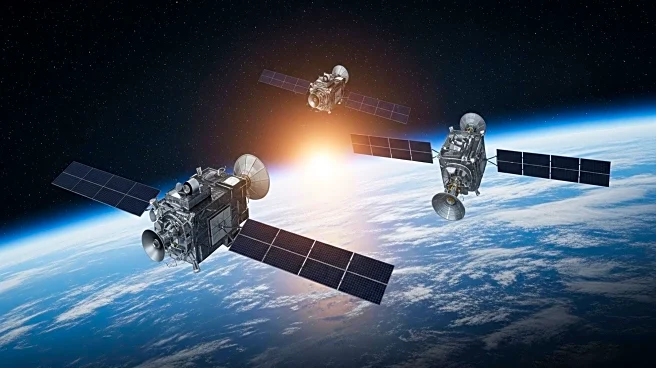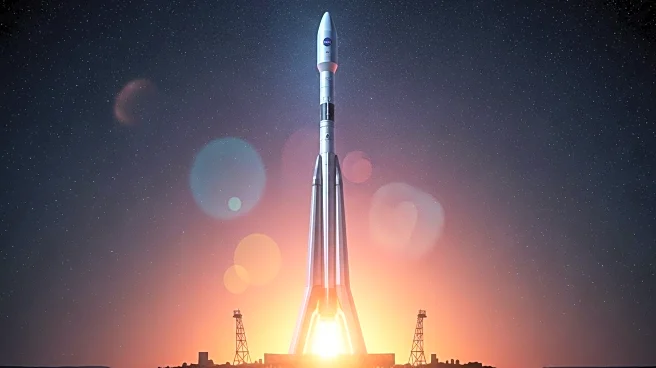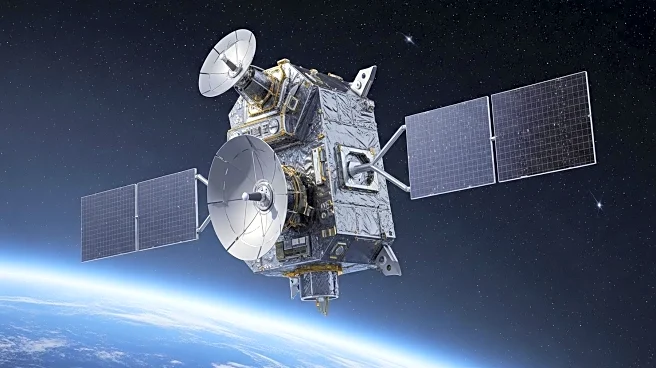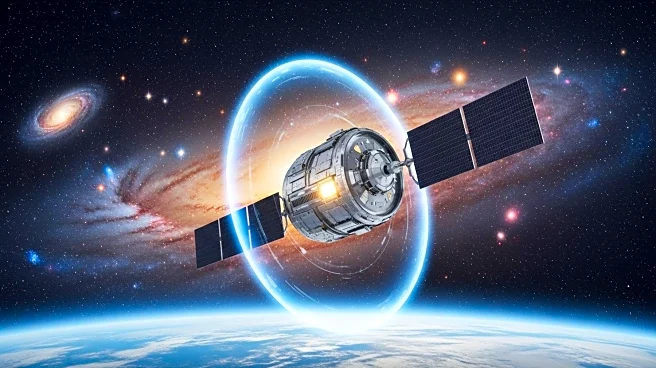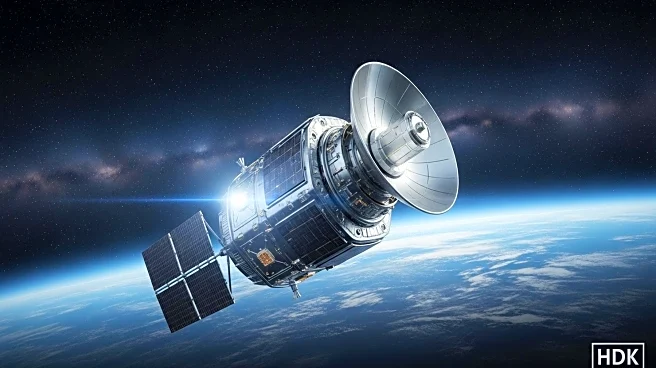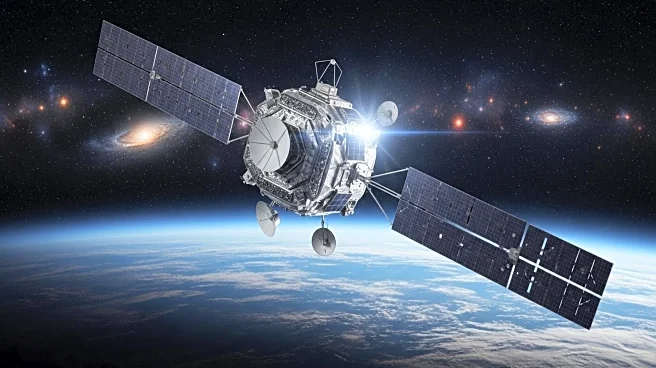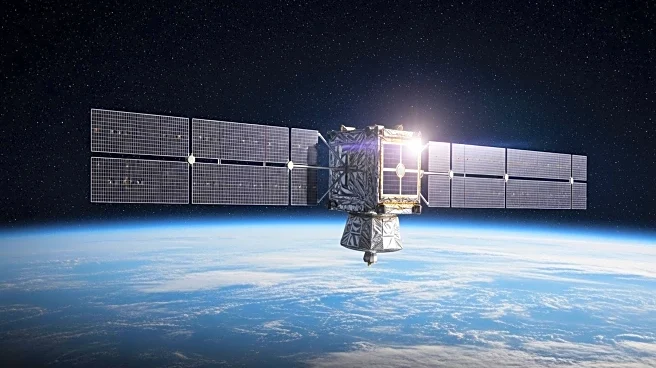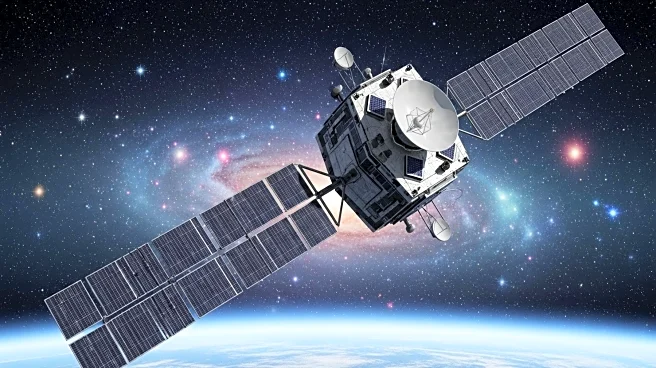What is the story about?
What's Happening?
NASA and NOAA are set to launch three spacecraft on a SpaceX Falcon 9 rocket from Kennedy Space Center on September 23, 2025. The mission includes NASA's IMAP probe, NOAA's SWFO-L1 satellite, and NASA's Carruthers Geocorona Observatory. These missions will travel to the Earth-Sun L1 Lagrange point, approximately 1 million miles from Earth, to provide a comprehensive view of the Sun-Earth system. IMAP aims to map the heliosphere's boundary and study particle acceleration, SWFO-L1 will monitor space weather, and Carruthers will capture ultraviolet images of Earth's geocorona. The launch represents a coordinated effort to enhance understanding of solar influences and improve space weather forecasting.
Why It's Important?
The launch of these missions is crucial for advancing scientific knowledge and operational capabilities related to space weather and the Sun-Earth connection. IMAP's high-resolution mapping of the heliosphere will provide insights into cosmic particle acceleration and the solar system's protective boundary. SWFO-L1's real-time monitoring will offer early warnings of solar storms, safeguarding satellites, power grids, and astronauts. Carruthers' observations of Earth's geocorona will improve understanding of atmospheric escape and space weather impacts. This mission trio is timely, as solar activity is expected to peak in 2025-2026, increasing the need for robust monitoring and forecasting.
What's Next?
Following the launch, the spacecraft will cruise for about four months to reach L1, arriving around January 2026. They will then enter orbits around L1 and undergo testing, with primary science operations expected to begin by March 2026. The data collected will feed into prediction models, enhancing space weather forecasts and informing future missions. The collaboration between NASA and NOAA, along with international partners, underscores the global effort to address space weather challenges and improve scientific understanding of the Sun-Earth system.
Beyond the Headlines
The mission highlights the interconnected nature of scientific research and operational monitoring in heliophysics. By combining real-time space weather data with scientific observations, researchers can better understand how solar events propagate from the Sun to Earth. The collaboration also reflects the importance of international partnerships in addressing global challenges like space weather. The insights gained from these missions will contribute to future initiatives, including NASA's Heliophysics Big Year and potential interstellar exploration missions.
AI Generated Content
Do you find this article useful?
